A role of mitochondrial complex II defects in genetic models of Huntington's disease expressing N-terminal fragments of mutant huntingtin
- PMID: 23720495
- PMCID: PMC3766181
- DOI: 10.1093/hmg/ddt242
A role of mitochondrial complex II defects in genetic models of Huntington's disease expressing N-terminal fragments of mutant huntingtin
Abstract
Huntington's disease (HD) is a neurodegenerative disorder caused by an abnormal expansion of a CAG repeat encoding a polyglutamine tract in the huntingtin (Htt) protein. The mutation leads to neuronal death through mechanisms which are still unknown. One hypothesis is that mitochondrial defects may play a key role. In support of this, the activity of mitochondrial complex II (C-II) is preferentially reduced in the striatum of HD patients. Here, we studied C-II expression in different genetic models of HD expressing N-terminal fragments of mutant Htt (mHtt). Western blot analysis showed that the expression of the 30 kDa Iron-Sulfur (Ip) subunit of C-II was significantly reduced in the striatum of the R6/1 transgenic mice, while the levels of the FAD containing catalytic 70 kDa subunit (Fp) were not significantly changed. Blue native gel analysis showed that the assembly of C-II in mitochondria was altered early in N171-82Q transgenic mice. Early loco-regional reduction in C-II activity and Ip protein expression was also demonstrated in a rat model of HD using intrastriatal injection of lentiviral vectors encoding mHtt. Infection of the rat striatum with a lentiviral vector coding the C-II Ip or Fp subunits induced a significant overexpression of these proteins that led to significant neuroprotection of striatal neurons against mHtt neurotoxicity. These results obtained in vivo support the hypothesis that structural and functional alterations of C-II induced by mHtt may play a critical role in the degeneration of striatal neurons in HD and that mitochondrial-targeted therapies may be useful in its treatment.
Figures
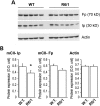

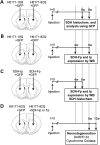
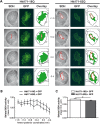

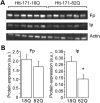
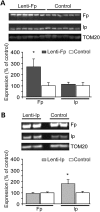

Comment in
-
Epigenetics of Huntington's disease.J Neurol. 2013 Nov;260(11):2938-41. doi: 10.1007/s00415-013-7158-x. J Neurol. 2013. PMID: 24141735 No abstract available.
Similar articles
-
Involvement of mitochondrial complex II defects in neuronal death produced by N-terminus fragment of mutated huntingtin.Mol Biol Cell. 2006 Apr;17(4):1652-63. doi: 10.1091/mbc.e05-07-0607. Epub 2006 Feb 1. Mol Biol Cell. 2006. PMID: 16452635 Free PMC article.
-
Full length mutant huntingtin is required for altered Ca2+ signaling and apoptosis of striatal neurons in the YAC mouse model of Huntington's disease.Neurobiol Dis. 2008 Jul;31(1):80-8. doi: 10.1016/j.nbd.2008.03.010. Epub 2008 Apr 16. Neurobiol Dis. 2008. PMID: 18502655 Free PMC article.
-
In vivo cell-autonomous transcriptional abnormalities revealed in mice expressing mutant huntingtin in striatal but not cortical neurons.Hum Mol Genet. 2011 Mar 15;20(6):1049-60. doi: 10.1093/hmg/ddq548. Epub 2010 Dec 20. Hum Mol Genet. 2011. PMID: 21177255 Free PMC article.
-
Nature and cause of mitochondrial dysfunction in Huntington's disease: focusing on huntingtin and the striatum.J Neurochem. 2010 Jul;114(1):1-12. doi: 10.1111/j.1471-4159.2010.06741.x. Epub 2010 Apr 9. J Neurochem. 2010. PMID: 20403078 Review.
-
Genetic manipulations of mutant huntingtin in mice: new insights into Huntington's disease pathogenesis.FEBS J. 2013 Sep;280(18):4382-94. doi: 10.1111/febs.12418. Epub 2013 Jul 31. FEBS J. 2013. PMID: 23829302 Free PMC article. Review.
Cited by
-
The chicken or the egg: mitochondrial dysfunction as a cause or consequence of toxicity in Huntington's disease.Mech Ageing Dev. 2017 Jan;161(Pt A):181-197. doi: 10.1016/j.mad.2016.09.003. Epub 2016 Sep 12. Mech Ageing Dev. 2017. PMID: 27634555 Free PMC article. Review.
-
Potential mechanisms to modify impaired glucose metabolism in neurodegenerative disorders.J Cereb Blood Flow Metab. 2023 Jan;43(1):26-43. doi: 10.1177/0271678X221135061. Epub 2022 Oct 24. J Cereb Blood Flow Metab. 2023. PMID: 36281012 Free PMC article. Review.
-
Redox Mechanisms in Neurodegeneration: From Disease Outcomes to Therapeutic Opportunities.Antioxid Redox Signal. 2019 Apr 10;30(11):1450-1499. doi: 10.1089/ars.2017.7321. Epub 2018 May 4. Antioxid Redox Signal. 2019. PMID: 29634350 Free PMC article. Review.
-
The emergence of the mitochondrial genome as a partial regulator of nuclear function is providing new insights into the genetic mechanisms underlying age-related complex disease.Hum Genet. 2014 Apr;133(4):435-58. doi: 10.1007/s00439-013-1402-4. Epub 2013 Dec 4. Hum Genet. 2014. PMID: 24305784 Review.
-
Mitochondrial metals as a potential therapeutic target in neurodegeneration.Br J Pharmacol. 2014 Apr;171(8):2159-73. doi: 10.1111/bph.12513. Br J Pharmacol. 2014. PMID: 24206195 Free PMC article. Review.
References
-
- Damiano M., Galvan L., Deglon N., Brouillet E. Mitochondria in Huntington's disease. Biochim. Biophys. Acta. 2010;1802:52–61. - PubMed
-
- Harper P.S. Huntington's Disease. WB Saunders Company Ltd, London. 1991
-
- Myers R.H., Vonsattel J.P., Stevens T.J., Cupples L.A., Richardson E.P., Martin J.B., Bird E.D. Clinical and neuropathologic assessment of severity in Huntington's disease. Neurology. 1988;38:341–347. - PubMed
-
- Sugars K.L., Rubinsztein D.C. Transcriptional abnormalities in Huntington disease. Trends Genet. 2003;19:233–238. - PubMed
Publication types
MeSH terms
Substances
LinkOut - more resources
Full Text Sources
Other Literature Sources
Medical
Molecular Biology Databases

